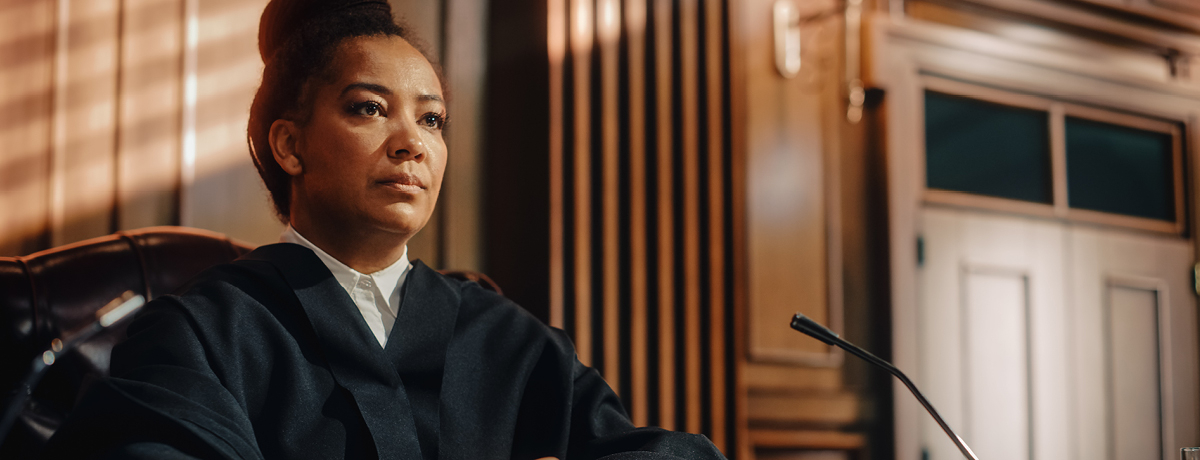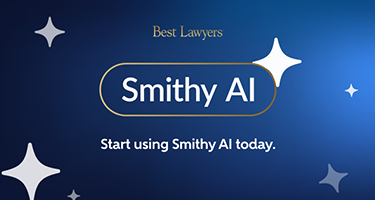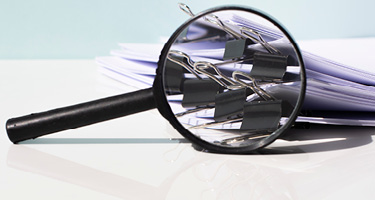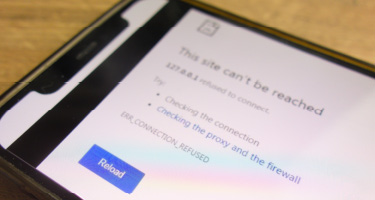The path of the legal professional can be unpredictable. Just as some lawyers move across the aisle from prosecution to defense, and vice-versa, others heed another calling: to the other side of the bench.
The journey might not end there, though. Following the end of a term or a decision to vacate the role, former judges are sought after as educators and mediators. Many also enter private practice to bring unique prestige and a holistic view of the law that can help a firm get favorable resolutions.
Although their motivations vary, every lawyer or judge who transitions is, ideally, doing so out of a commitment to justice. Through their advocacy and fair-mindedness, these legal leaders strengthen the practice of law and uphold a tradition of professionalism for the next generation.
The Broader Impact
Many lawyers and judges would aspire to match the career of Kevin H. Sharp. He served as a petty officer in the United States Navy from 1982 to 1986 and was admitted to the Tennessee Bar in 1993. He spent the next decade in private practice and public service. He launched Drescher & Sharp, P.C., in Nashville in 2003 and was first recognized by The Best Lawyers in America® in 2008 (and, more recently, from 2020 to today) for Employment Law – Individuals.
He left the firm he founded in 2010 for an excellent reason—President Barack Obama nominated him to a judgeship in the U.S. District Court for the Middle District of Tennessee that November; he was unanimously confirmed by the Senate in May 2011. By October 2014, he had been named chief judge, and over his nearly six years on the bench presided over nearly 3,700 civil and 363 criminal cases.
One standout case was that of Chris Young, a 23-year-old man Sharp was required to sentence to life in prison for a nonviolent drug offense due to the federal “three strike” and mandatory minimum laws. The gravity of Young’s case, as well as other unique criminal decisions, weighed on Sharp’s conscience: “I was struggling with this internal question—‘Am I more valuable on the bench or off the bench?’”
He consulted peers and mentors for guidance. Though he was well-regarded among the judiciary, he decided to step down from his post in 2017 and joined civil-rights firm Sanford Heisler Sharp, LLP as its newest named partner. “I knew [firm chairman] David Sanford after having served as a local counsel to the firm in a race discrimination trial prior to becoming a judge,” Sharp recalls. “I felt the firm’s values and mission matched my own.”
This new chapter of his career gave him the opportunity to correct what he felt were unjust applications of the law, and perhaps ease his soul. In March 2020, he visited the Oval Office with Kim Kardashian to try to secure clemency for Young. While Kardashian’s advocacy might have gained the White House’s initial attention, Sharp’s influence was evident. On his last day in office—January 20, 2021—President Donald Trump commuted Young’s sentence to time served, citing Sharp’s input and quoting him directly. Shortly after, Sharp was at the airport in Nashville to greet Young upon his release; he was the first person Young embraced.
Sharp is now a co-vice-chair of Sanford Heisler Sharp, leading many of its complex litigation matters and pursuing justice on behalf of people whose cases are particularly meaningful. One example: He actively leads pro bono efforts to secure presidential clemency for Leonard Peltier, a Native American civil rights activist who was convicted in federal court and sentenced to two consecutive life terms for killing two FBI agents in 1975 at Pine Ridge Reservation in South Dakota. His plight was memorialized by Rage Against the Machine in the riveting video for the 1994 rap-rock anthem, “Freedom.”
Sharp shares the widespread belief that Peltier’s conviction and sentence were wrongful. Facts have emerged following Peltier’s verdict that date back as far as 1980, which Sharp says demonstrate his client did not get a fair trial. Such evidence includes a ballistics report that proved shell casings from the murder weapon did not come from a rifle tied to Peltier – a revelation uncovered following a Freedom of Information Act request filed by Peltier’s original trial attorney. Sharp has also pointed to additional information that has emerged to support Peltier’s case, including credible allegations of juror bias as well as the FBI’s alleged intimidation of an eyewitness.
Looking through dual lenses as a lawyer and former judge, Sharp recognized that the case was rife with constitutional violations and injustices. Having met Peltier—who is nearly 79 years old now and uses a walker—and immersed himself in Native American history, he has, he says, a fuller understanding of the case’s impact.
“He’s a nice old guy who is frustrated he’s still in prison,” Sharp says. “Here we are in 2023, nearly 50 years later, still talking about his incarceration – [which is] a seminal event in America’s history and our jurisprudence in this country. But I’m optimistic [about representing Peltier] because though the story has not changed, the audience has. I think people are more open to hearing about this case and issues like treaty violations.”
A Diversity Trailblazer
Patricia Brown Holmes was omnipresent in the Illinois legal system in the 1980s and ’90s, notably as Assistant United States Attorney for the Northern District of Illinois in the Seventh Circuit, prosecuting violations of federal laws before grand juries.
“It was fulfilling to say you were in court ‘on behalf of the people of Illinois,’ because you want to represent the victims but also the defendant to make sure they get a fair trial,” she says. “As a prosecutor, when you look at judges you see the epitome of the profession, so I set my sights early on. I wanted to progress through the office and become a judge.”
She was chief assistant corporation counsel for the City of Chicago in 1997 when she submitted her name for an associate judgeship in Cook County, the largest of the 24 judicial circuits in Illinois. This was the first time there had been several judicial openings in more than a decade, and she was one of hundreds to apply.
“Out of 368 candidates they chose 18, and I was one of those fortunate 18,” Holmes says. “It made me the youngest African-American to be appointed an associate judge in the history of Illinois. It was a big responsibility, and I knew I had to do a great job.”
That she did. For the next seven and a half years she served as a trial judge in Illinois Circuit Court in Cook County, where she was known for being “tough but always fair,” she says—a reputation she relished. Looking to progress within the system, and following the encouragement of her peers, she interviewed to be magistrate judge in Illinois’ Northern District. She got near the end of the selection process, and though she ultimately was not chosen, her interviewers later contacted her for other positions.
It was Ron Safer, a former colleague from the U.S. Attorney’s office, who persuaded her to vacate the associate judgeship, a job she loved, and join him at Schiff Hardin in 2005 as a partner, executive committee member and diversity committee chair. The chance to put her legal knowledge and insight to work for a large firm and bolster diversity in its ranks sealed the deal.
“It was almost like starting over, but starting over at the top of your game because you are an equity partner,” says Holmes, who has been annually recognized by The Best Lawyers in America since 2011 in Chicago for Commercial Litigation and Criminal Defense: White-Collar. Clearing a path for women and minorities in the profession became her passion over the next 10 years: “I dug in and got to work while at the same time mentoring and training and being a role model for young lawyers coming out of law school.”
Over drinks with other lawyers near the end of 2015, Holmes and Safer wanted to take their achievements to the next level and start their own firm, one with a culture of diversity and inclusivity and a commitment to social justice. Word got around to other lawyers and clients, and Riley Safer Holmes & Cancila LLP opened its doors in March 2016, beginning with a staff of 22. In 2023, the civil litigation firm employs 100 lawyers across five offices in four states.
“Outside the goal of providing excellent service, we have the ability to be flexible, and we started with open minds,” Holmes says. “That many clients followed us, and we gained new ones, was a testament to our mission.”
Trending Behind the Bench
Turnover in the judiciary can be substantial, and external factors such as the pandemic accelerated retirement for several judges at federal and local levels. There have been many judicial appointments in recent years, though many vacancies remain.
The good news: Between 2018 and 2022, 412 professionals recognized by Best Lawyers left private practice to become judges. The peak year was 2019, during which 91 traded a suit for a robe. Commercial litigation was the top practice area among those 412, followed closely by appellate law, which had been among the top five specialties for the previous five years.
Changes in national leadership have affected the landscape as well. In the year after the 2020 presidential election, at least 19 lawyers left private practice to join the Biden administration or some other federal organization—including, notably, Second Gentleman Douglas C. Emhoff, the husband of Vice President Kamala Harris.
On the flip side, one evergreen challenge is for supply to catch up with demand for judges at the state and federal level. U.S. District Courts (including territorial courts) have 677 authorized judgeships. As of August 7, 2023, nearly 10% of those spots are unfilled—60 of them, with 23 nominees pending and two pending for future vacancies, according to the Administrative Office of the United States Courts. The U.S. Court of Appeals is faring much better: Of 179 judgeships, just seven are vacant, with four nominees pending.
But with a majority of these vacancies in states with two Republican senators, expectations are manageable on whether the Senate will maintain its momentum. This is a key complication that characterizes a sector constantly in flux.
Subjective, Weighty Decisions
Ultimately, for lawyer-judges, the bottom line is not as prominent in their decision making as peace of mind and a sense of purpose. Although both Sharp and Holmes speak reverently of their time as judges, both seem content with being private practitioners again because of the impact they’re making for clients and within their firms. Their experience is certainly not a rule, though, and each offers advice for those pursuing a change in either direction.
Holmes notes that the early days are critical for a new judge and suggested that aspiring and new judges alike should rely on court employees’ experience to help ease the transition. “After they see and know that you’re taking it seriously and want to do a good job and are not impervious, then it can become a family,” she says. “And then the real work—and fun—can begin.”
Sharp notes that those who might consider making a career shift off the bench—as a midpoint or an endpoint—will naturally consider salary and a possible change in prestige. But he stresses that it’s important as well to contemplate the impact they can have on the profession and even society at large. “You have to remember why you became a lawyer. If you’re just following a path because it’s a path, you will be dissatisfied,” he says. “Truly ask yourself if you’re making your world a better place. Sometimes that means keeping the robe on because you’re making good decisions. And sometimes that means you’re a good judge, but you can be a great advocate again for a particular position.”































